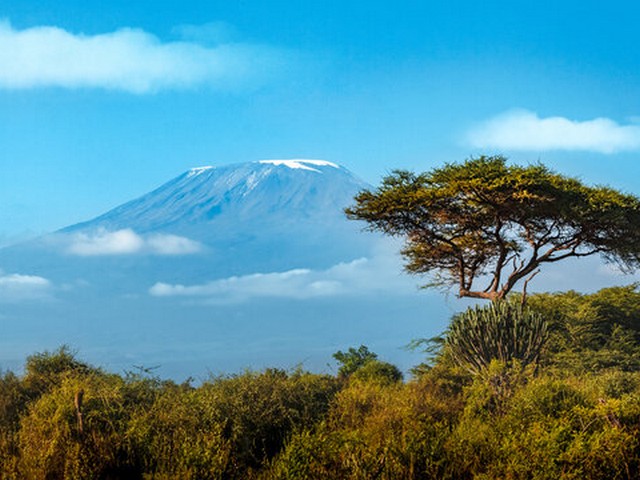Ascend the Roof of Africa: Unveiling the Machame Route’s Success on Kilimanjaro
Welcome to the Kilimanjaro Centre for Trekking and Ecotourism (KCTE) blog, where adventure meets the spirit of Africa! Today, we’re unpacking the secrets behind the popular Machame Route’s impressive summit success rate. Often termed the "Whiskey Route," this path to the peak of Mount Kilimanjaro is not just a journey but a testament to resilience and awe-inspiring vistas. Whether you’re a seasoned climber or a novice excited to scale new heights, understanding why the Machame Route boasts such a high success rate can inspire and prepare you for the adventure of a lifetime.
Why Choose the Machame Route?
The Scenic Splendor and Gradual Acclimatization
The Machame Route is renowned for its stunning landscapes and diverse ecosystems. From lush rainforests to alpine deserts and icy arctic zones, the route offers a visual feast that captivates and thrills. But it’s not just the beauty that makes this route preferable; its design promotes gradual acclimatization. This is crucial, as acclimatizing properly is a significant factor in reaching the summit successfully.
The Journey Duration
Typically a 6-7 day trek, the Machame Route allows climbers to adjust to altitude gradually, reducing the risk of altitude sickness and increasing the summit success rate. The extra days may challenge your endurance but they significantly raise your chances of standing atop Uhuru Peak, Africa’s highest point.
What Makes the Machame Route a Favorite Among Climbers?
The Challenge and Reward
The Machame Route is considered a moderately difficult trek but it’s this very challenge that entices many. The steep trails and longer distances each day make it physically demanding but incredibly rewarding. The sense of achievement coupled with panoramic views and the ever-changing terrain makes every step worth it.
Strategic Night Camps
Strategic camping locations like the Shira Plateau, Barranco Camp, and the Barafu Camp not only offer essential rest but are positioned to maximize your body’s adaptation to the higher altitudes. This careful placement of camps plays a pivotal role in the high success rates associated with the Machame Route.
Summit Success Rates: Statistics and Factors
The Machame Route boasts an impressive summit success rate, generally reported between 85% to 90%. This high success rate is attributed to several factors:
- Proper Acclimatization: The route’s design with its longer duration and ‘climb high, sleep low’ strategy aids in acclimatization.
- Experienced Guides: At KCTE, our guides are seasoned, having summited Kilimanjaro numerous times. They are trained to prioritize safety and are adept at helping climbers acclimate.
- Comprehensive Support: From porters and cooks to logistical support, every detail is handled meticulously to allow you to focus solely on the climb.
Training Tips for the Machame Route
Preparing for Kilimanjaro is no small feat and the right preparation can significantly impact your success. Here are some tips:
- Physical Conditioning: Focus on cardiovascular fitness, strength training, and hiking. Regular long walks with a packed daypack will simulate the daily exertion on the mountain.
- Mental Preparedness: Mental stamina is as crucial as physical preparedness. Familiarize yourself with the route’s challenges and cultivate a resilient mindset.
- Practice Hikes: If possible, engage in practice hikes that include varying elevations to acclimate your body to similar conditions.
What to Expect: A Daily Breakdown on the Machame Route
Day 1 to Day 7: Machame Gate to Uhuru Peak
Each day on the Machame Route brings new challenges and exhilarating experiences. From the initial ascent through the lush montane forest to scaling the Barranco Wall and finally pushing through the final summit night from Barafu Camp to Uhuru Peak, the journey is as rewarding as it is breathtaking.
Why Book With Kilimanjaro Centre for Trekking and Ecotourism (KCTE)?
At KCTE, we are not just committed to helping you reach the summit; we are dedicated to making your climb safe, enjoyable, and memorable. Our knowledgeable guides, comprehensive climb support, and attention to environmental conservation ensure that your trek is a success in every way.
FAQs About Climbing Kilimanjaro Via the Machame Route
Q1: What is the best time to climb Kilimanjaro using the Machame Route?
- The best times are during the dry seasons, from late June to October and from late December to early March.
Q2: What should I pack for the Machame Route?
- Essentials include thermal layers, waterproof gear, sun protection, a sleeping bag suitable for low temperatures, and a comfortable backpack.
Q3: How can I prevent altitude sickness on the Machame Route?
- Acclimatize properly, stay hydrated, eat well, ascend slowly, and listen to your body and guide’s advice.
Q4: Do I need special insurance for climbing Kilimanjaro?
- Yes, ensure you have travel insurance that covers high altitude trekking up to 6,000 meters.
Ready to Conquer Kilimanjaro?
As you consider your options for climbing Kilimanjaro, remember that the Machame Route offers not just a path, but a profoundly transformative journey. With its high success rate and the comprehensive support from KCTE, your dream of reaching the summit is within grasp.
Are you ready to embark on this incredible adventure? Contact Kilimanjaro Centre for Trekking and Ecotourism today, and let’s make your summit dreams a reality. Climb with us, where every step counts and every peak conquered is a celebration of spirit and endurance.




